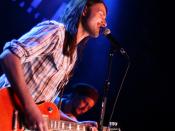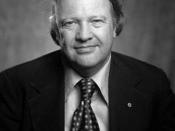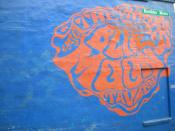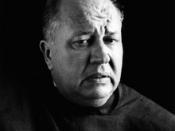Discuss the thematic and symbolic importance of animals in the works of Theodore Roethke, James Dickey and other authors we studied.
Theodore Roethke and James Dickey use animals and the theme of nature throughout their works. Roethke was known for his use of nature, "greenhouses"ÃÂ, and for the animal-like characteristics that he gave plants. In Cuttings, Roethke animates the plants with "stem-fur dries"ÃÂ and "tendrilous horn"ÃÂ. In Cuttings, later, he refers to the sprouts as "slippery as fish"ÃÂ and in the Root Cellar, the bulbs are described as "hunting for chinks in the dark"ÃÂ and the tendrils of plants hanging are compared to "tropical snakes"ÃÂ.
The imagery of plants taking on animal characteristics is two-fold for Roethke. It connects all living things together, as we are connected to the plants, the soil and their growth. Also, the animal characteristics bring the plants "alive"ÃÂ as with breathing air as we do.
Just by looking at flowers in a garden, you do not necessarily think of them as living, breathing organisms.
Roethke's animal descriptions bring plants to life as well as animate them. In the poem, The Bat, Roethke begins with an innocent tone of describing the bat, almost cute as a "mouse"ÃÂ. But then he continues his description with "human"ÃÂ characteristics of the bat, such as "ÃÂhis fingers ....about his head"ÃÂ. This poem ends with an unsettling thought of our connection or link to nature, how closely related we truly are, "when mice with wings can wear a human face"ÃÂ. Roethke brings life and its connections clearly to the reader with his use of animal symbolism.
James Dickey also used animals to connect us to nature. In Fence Wire, he uses the man-made image of the barbed wire and then takes us on a journey along the wire discovering the connections in this complete circle. Not only does the wire encompass the woods, the fields, and the grazing cows but also connects the winter hawk upon the post that turns into a robin, then into a boy and finally "into a man who holds his palm on top of the tense strand"ÃÂ. A wonderful imagery of nature and how we are all connected. It is an embrace, a circling, that not only connects but also creates order and balance.
Two other poems by Dickey, A Dog Sleeping on my Feet and The Heaven of Animals, are prime examples of how Dickey uses animals and connects them to our lives.
Of the other authors that we studied, Hemingway uses animals as a way to become one with nature and spoke of "fishing as way of spiritual renewal"ÃÂ. Fitzgerald uses the imagery of "fish jumping and star shining and lights gleaming around the lake"ÃÂ, as a sense of appreciation and being attuned to life for Dexter in Winter Dreams. Finally, McKay uses the imagery of animals in When Dawn Comes to the City, comparing the dark, depressing life in the streets of the city to the glorious, life overflowing on the island. The island animals are "crowing, crowing, crowing"ÃÂ or "braying, braying, braying"ÃÂ are images full of life.




